Last Chance to Catch NYC's Holiday Notalgia Train
We met the voices of the NYC subway on our nostalgia ride this weekend!


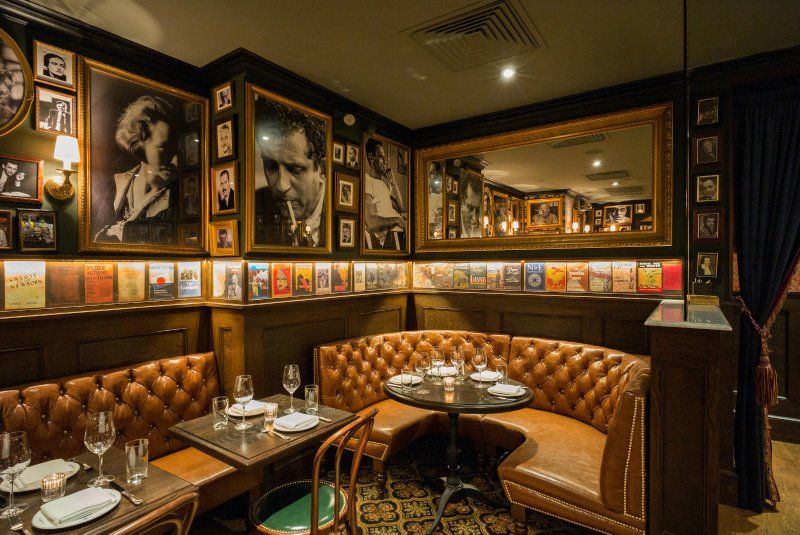 Photo courtesy Chumley’s
Photo courtesy Chumley’s
Professor and New York-native, Delia Cabe, invites readers to take her hand and “follow in the boozy footsteps of legendary authors,” with her newest work, Storied Bars of New York: Where Literary Luminaries Go to Drink. Raised on the Lower East Side, Cabe reflects on a childhood filled with the awareness that she walked many of the same streets and entered many of the same buildings that housed some of the most famous authors. As Cabe grew up, the fascinations with the haunts of the literary legends of the past only increased, so when 21 hit, so did she– hopping bar to bar to check out the hangs of both new and historic literary luminaries in what has now culminated in her new novel.
“From Manhattan to Brooklyn to Queens, New York’s literary community flourishes,” Cabe writes. “After a day wrestling with prose and verse, they leave their writing, perhaps in mid-sentence as Hemingway allegedly did, and head for the bars.”
As our own ode to the writers of the past and literary hubs of the present, here’s a brief preview of 12 of the 34 different locations, drinks and smatterings of the knowledge you can glean about them in Storied Bars. And to learn about more legendary literary hangouts, you can purchase Storied Bars on Amazon here!
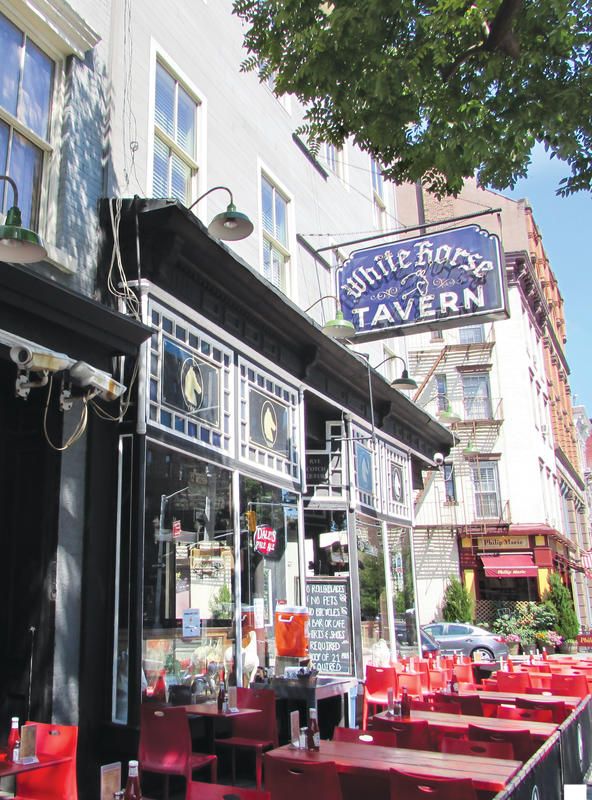
Photo courtesy of Delia Cabe
The White Horse Tavern, located on Hudson Street in Greenwich Village, has deep literary roots. Built in 1880– the same year as the Panama Canal, as Cabe points out– its legacy lives on most strongly as an homage to Welsh poet, Dylan Thomas. Thomas, who would eventually succumb to alcoholism in the 1950s, chose the White Horse Tavern as his favored watering hole. Even today, the original poster for his play Under Milk Wood (debuting in New York in April 1953, just months before his death in November) still hangs on the tavern’s walls.
Along with the tavern’s historical lineage, Cabe writes that the physical features of the White Horse makes it a “historical relic,” as well. It still uses its original, solid mahogany bar, has its ornately hand-carved ceilings, and features secret pockets of ink, wood and ceramic white horses strewn throughout.

Photo courtesy Chumley’s
Chumley’s, the famed former speakeasy located on 86 Bedford in Greenwich Village, has been open since it started rebelling against prohibition in 1928. As a result of its long history and cloudy past, it has become a deep source of mysterious anecdotes—most of their validity still on shaky ground. However, as Cabe reports, it was in fact the hang out spot for William Faulkner, fathers of the beat generation authors Jack Kerouac and Allen Ginsberg, and French feminist author, Simone de Beauvoir, among 42 other writers of the era listed by Cabe.
Though a chimney collapsed in 2007, almost completely condemning Chumley’s, the bar was instead rebuilt and renovated to match its 1920s glamour. This includes a completely refurbished fireplace (though codes prevent it from being of any practical use,) the untouched front door (speakeasy peep-hole and all) as a result of its historical landmark status, along with 220 author photos and book jackets discovered during the repairs.
Signature drink: Chaplin (Scotch, chocolate ice cream and citrus notes).
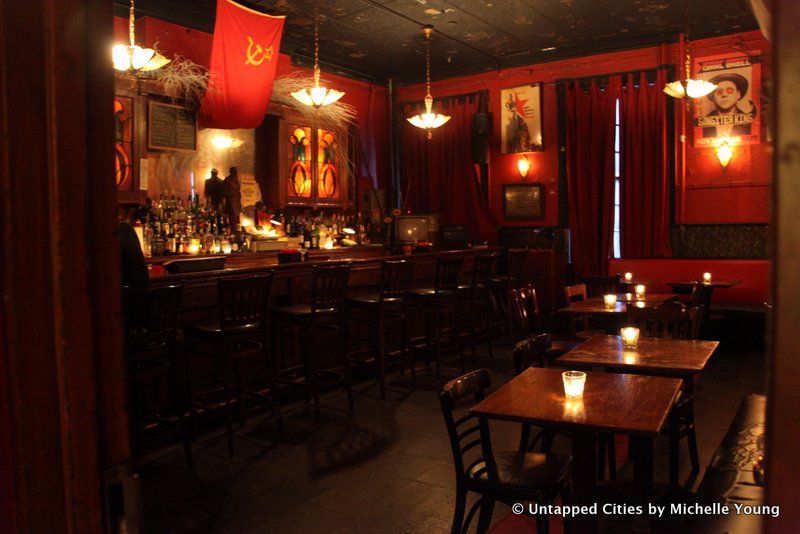
Though the East Village’s KGB Bar didn’t technically make its debut until the mid-’90s, it has been evoking feelings of “state secrets” through a dimily lit glow in “communist red,” since 1948. The building was first home to the generation prior to the bar’s founder, Denis Woychuk, as a way for McCarthy era, Ukranian socialists to keep their operations covert. Inspired by the shots of whisky Woychuk had with his father within the walls, he then morphed the location first into a gallery (which didn’t last through the stock market crash of the ’80s) and then into the bar it is today.
Since 1994, KGB bar has been a spot for both new writers and celebrated authors to come and share their work. In fact, the bar even published is own novel in 2002 entitled, On the Rocks: The KGB Bar Fiction Anthology, which highlights “provocative and bold works,” as Cabe writes, by both famed authors such as Mary Gaitskill and Dani Shapiro, as well as those “who have toiled in obscurity.” Its latest addition was formed as recently as 2014– the upscale speakeasy on the third floor known as the Red Room, which gives a 1920s feel (live music ensembles and all.)
Signature drink: Moscow Mule (along what continues to be its best seller– straight-up vodka)
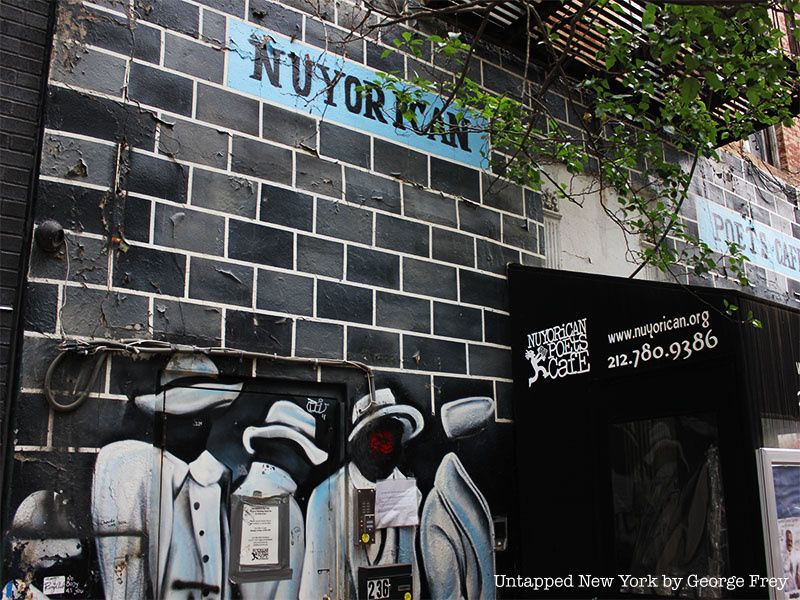
The Nuyorican Poet’s Cafe, which derives its name from a blending of words “New York” and “Puerto Rican,” grew from what was just at first a small gathering of poets who all congregated in the home of Puerto Rican poet and professor, Miguel Algarían. Some of its most fascinating notches in its historical belt included by Cabe are of William S. Burroughs (credited along with poets Jack Kerouac and Allen Ginsberg as a founding father of the beat generation) getting booed off stage, and the cafe’s claim in hosting the first ever poetry slam.
Today, the Nuyo (as the cafe is now most commonly referred) is only open for performances. These performances include the famous Friday night poetry slams open to people of ages, as well as open mic nights, theatre and musical performances, and readings among others. However, in 2018, the Nuyo will become a bit nomadic as it plans on hosting its events throughout the city while the building goes under major renovations expected to last a year.
Signature drink: Plum Daiquiri (as an homage to Puerto Rican writer, William Carlos William’s poem, “This is just to say”).
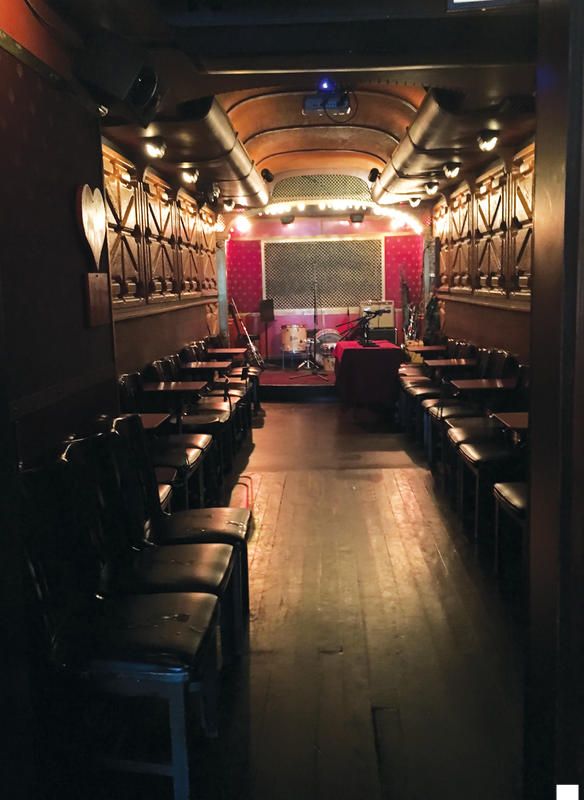
Photo Courtesy of Delia Cabe
A more contemporary addition on the literary bar scene is Williamsburg, Brooklyn’s Pete’s Candy Store. This refurbished storefront (originally a 1920’s general store called Funzi’s), is now home to the bimonthly “Pete’s Reading Series.” Many a present-day author’s including the likes of Jennifer Eagan and Gary Shteyngart have taken to the small stage in the back of the bar to share their work. Other events include a monthly poetry reading series called “Pete’s Big Salmon,” open-mic showdowns, and in 2015 the start of an annual “prose bowl” for both published and novice writers.
As Cabe reports of Shteyngart describing the Pete’s Candy Store atmosphere, Pete’s is “the most intimate reading space in Brooklyn. Think of a pre-war dining car with an endless supply of booze.”
Signature drink: Black Russian (for Pete’s Candy Store regular, best-selling novelist Caroline Leavitt).
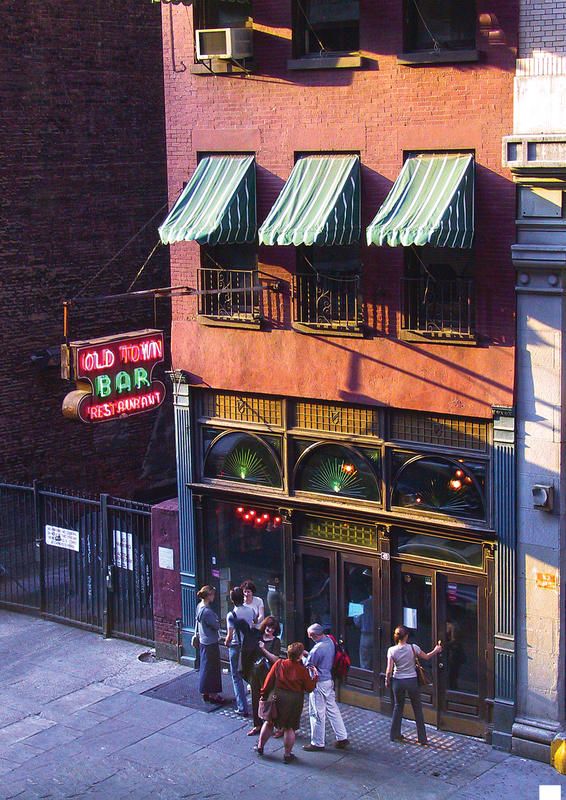
Photo Courtesy of Delia Cabe
Old Town Bar, located on 18th Street between Broadway and Park, opened its doors back in 1892. Today the bar is owned by Brooklyn-native, Gerard Meagher– the family’s second generation owner. Cabe writes that Gerard, like his father Larry Meager, is proud of the “unpretentious, convivial watering hole,” that he and his father ran, and although its been kept low-key, “the writers do come to quaff.” Among Old Town Bar’s literary lineage is Dermot McEvoy, Frank McCourt and the late Irish Poet and Nobel Prize winner Seamus Heany– all of whom have signed book jackets on the walls along with several others.
However, its not only the tingles of authors past that make Old Town Bar special. Despite being the kind of establishment Cabe reports Gerard describing as “a beer and whisky kind of place,” some of Old Town Bar’s physical attributes might be their biggest draw. In 2010, Old Town Bar threw a lavish party, complete with champagne and all, for their urinals’ 100th birthday– porcelain mammoths roughly the size of bathtubs. Then, the “55-foot-long, marble topped, carved mahogany bar has much to tell,” as well, Cabe writes.
Old Town Bar does have a lot to tell. Read more in Cabe’s book, which you can buy on Amazon here.
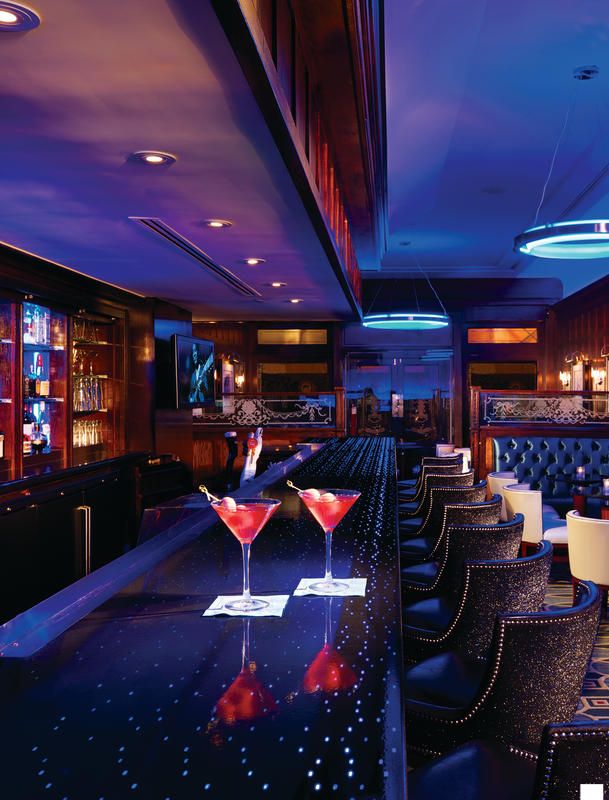
Photo via Delia Cabe courtesy of the Algonquin Hotel
The bar scene at the Algonquin was essentially created when a group a literary and theater icons known as the “Round Table” decided to make it their meeting spot back in 1919. Everyday for six days a week, the likes of Dorothy Parker, Robert Benchley, John Peter Toohey (among 8 other founders) would have their “board meetings” in what is today known as the Oak Room. It was in one such meeting that the idea for The New Yorker was spawn, along with several witticisms outlined by Cabe including, “Time wounds all heels,” which is credited to Frank Case. Due to precedent and status of the Round Table, the Algonquin’s roster of visitors has since become stacked with guests– William Makepeace Thackery, Mark Twain, Maya Angelou, J.D. Salinger, Tenessee Williams, and Kurt Vonnegut are just some among the team.
More recent additions include a commissioned piece from Brooklyn artist Natalie Ascencios (a second version of her painting of the Round Table, also known as the Vicious Circle) for the hotel’s centennial celebration. Then in 2012, the Algonquin went under some renovations, which thanks to its landmark status, kept most of the original decor. Visitors today can see easily see both more modern charms along with historic literary-themed cocktails.
Among these cocktails: The Dorothy Parker (a gin concoction)
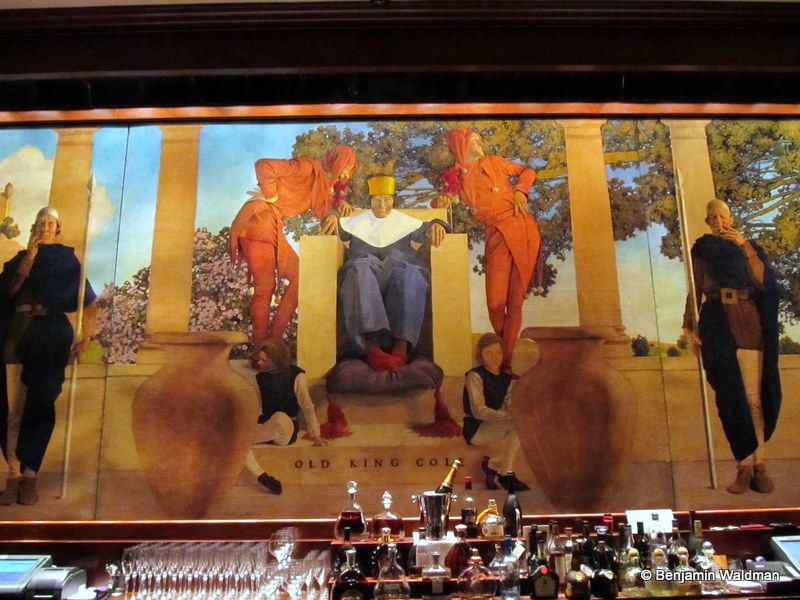
One of the most astounding parts about the St. Regis’ King Cole Bar is the mural for which it’s named– a 30-by-8-foot artistic representation of the old nursery rhyme created by Maxfield Parrish. However, the mural only hints at the kind of boozy grandeur that makes up the bar’s history, inspired many a bizarre myth and occasionally used as literary fantasy. For example, as Cabe writes, John Cheever claims he was conceived at the Saint Regis and James Bond in Live and Let Die uses the King Cole Bar to rendez-vous with a contact.
However, perhaps the most lasting of The King Cole Bar’s lineage is its claimed invention of the Bloody Mary. All the way from Harry’s New York Bar in Paris, bartender Fernand Petiot brought the drink to New York City. This version, entitled “Red Snapper: The Original Bloody Mary,” is also Cabe’s pick for the King Cole Bar signature cocktail.
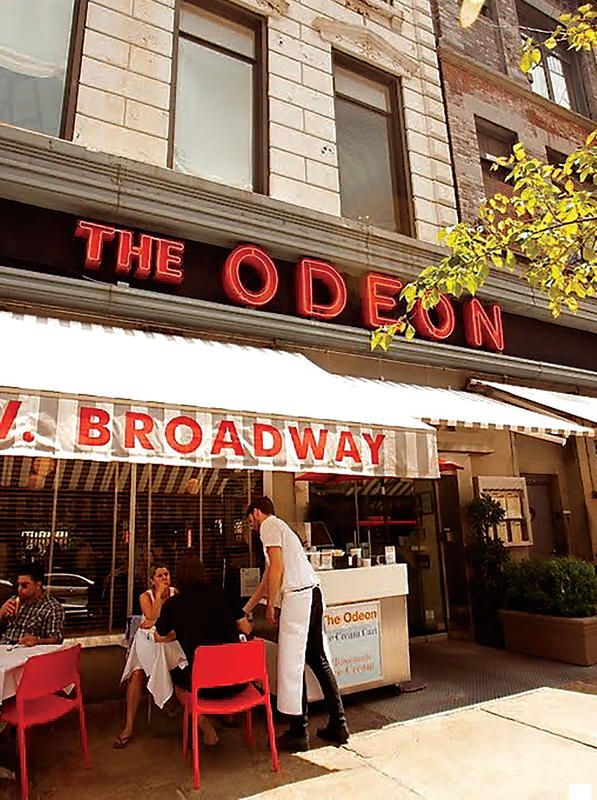
Photo via Delia Cabe courtesy of The Odeon
Although Tribeca is now filled with Art Deco relics and historical landmarks that have attracted celebrities from across the world, when The Odeon was first starting out, Tribeca was a seedy part of town to say the least. Or as Cabe writes, parallel to the history of Tribeca itself, The Odeon, “had none of the cachet it has today,” when it opened in 1980. However, just two months after it opened, the American-French bistro was awarded 2 out of 4 stars by The New York Times, which officially put it on the map. Just like that, The Odeon, again like Tribeca, became somewhat of a hodgepodge melting pot for creatives from all groups, including celebrities such as Madonna and Cher, artists Basquiat and Warhol. Of course, the most important to The Odeon’s history was perhaps Jay McInerney, who used the bar as somewhat of a mascot for his classic novel Bright Lights, Big City.
Cabe describes walking into The Odeon today like “walking into a preserved time capsule. Decades after its opening, it feels as if it has been there forever,” she writes. This includes several of the original Art Deco pieces of the restaurant (the walls, columns, terrazzo floor) with all new additions done in a way that feels truly authentic to the Art Deco aesthetic. Therefore, although contemporary visitors to The Odeon can’t throw them back with Basquiat until 4 a.m. anymore, the restaurant (closing at the more conventional midnight on most nights) still evokes the same feelings of creative energy it had at its inception.
Signature drink(s): The Cosmopolitan (which it claims to have been the originator of in 1988) and its more modern counterpart, a Ginger Martini
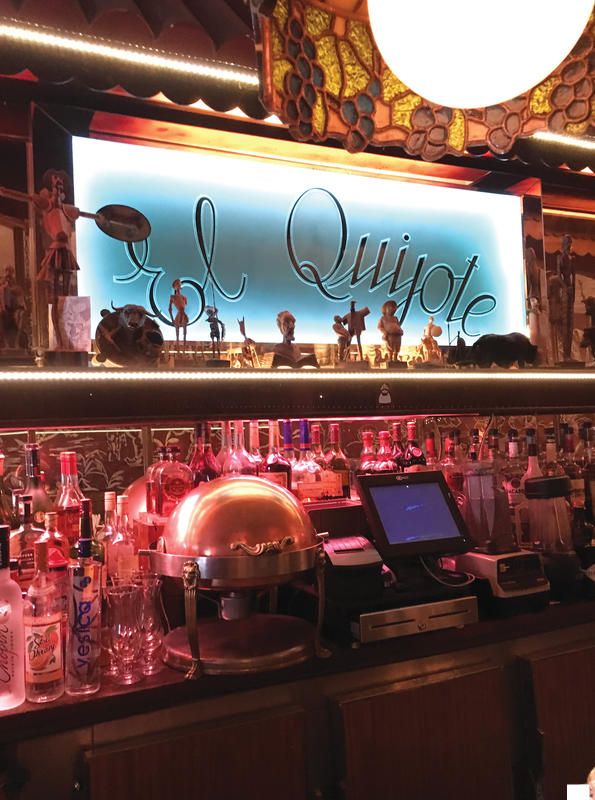
Photo courtesy of Delia Cabe
The Hotel Chelsea is famous for its wayward-home type quality its always had for burgeoning creatives. Though the hotel was built in 1880’s, its connected bar, El Quijote, wouldn’t “serve its first tapas and sangria” until 1930, as Cabe states. However, since its opening, it too became a home for residents of the Hotel Chelsea. Among some of the most notable are: Patti Smith and Robert Mapplethorpe (forever a duo), Mark Twain, once again all three of the beat generation founding fathers (Kerouac, Ginsberg and Burroughs), Thomas Wolfe, and Bob Dylan– just to name a few.
Though the Chelsea Hotel remained in the hands of the same family until 2007, El Quijote didn’t enter the possession of the new owners until 2014. Today, El Quijote still emanates vibes from the Cervantes novel that inspired it, as it depicts scenes from the novel (whimsical windmills, bulls and toreadors) accompanied by the sounds of Spanish flamenco music.
Signature drink: Gin-Tonic (since the El Quijote sangria recipe is apparently top secret)
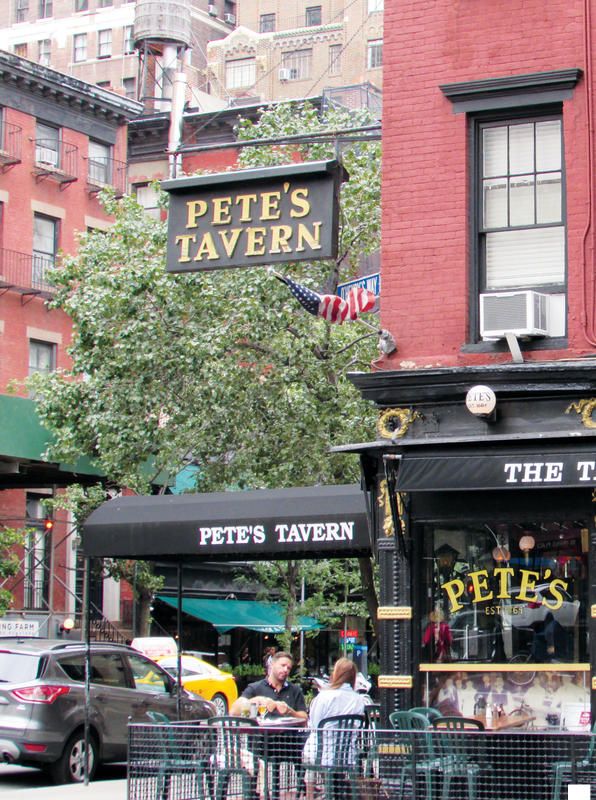
Photo courtesy of Delia Cabe
Cabe writes that even though famed author O. Henry died in 1910, “more than a century later, he still occupies his favorite booth here (in Pete’s Tavern),” though it was called Healy’s until Pete Bell bought it in 1932. Today, Pete’s Tavern retains many of its original decor since its opening in 1864 including its “peach-and-robin’s-egg-blue tile floor” and “time-worn wooden cash register.”
Since O. Henry, the Tavern’s had quite the decorated past from pretending to be a flower shop during prohibition, to more contemporaneously, becoming the meeting place Johnny Depp and gonzo journalist founder Hunter S. Thompson, as Depp prepared to play the part.
Signature drink: Frozen Strawberry Daiquiri (Hunter S. Thompson’s personal favorite)
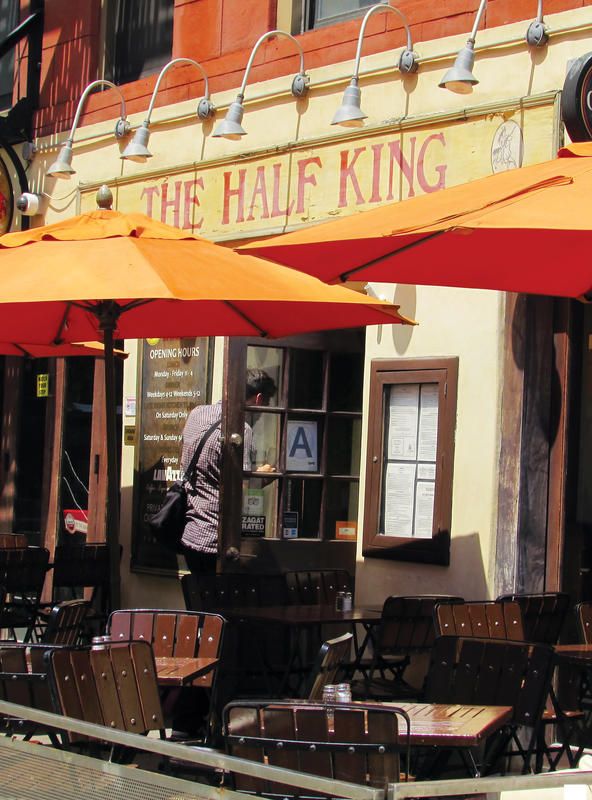
Photo Courtesy of Delia Cabe
Another Chelsea classic is the W. 23rd Street staple, The Half King. Though the antiqued inside of The Half King along with its very name, which comes from the name of a Native American war chief during the French and Indian War, evokes a deep-seeded past, it opened its doors in 2000. The inspiration behind the bar for its founders (A Perfect Storm author, Sebastian Junger, journalist Scott Anderson and documentarian Nanette Burstein) was to provide the war correspondent retreat ala Ernest Hemingway in Spain that the three journalists felt New York previously lacked. Now, just 17 years after its its inception, The Half King has done just what the founders set out to do– created a literary oasis.
Today, more than 50 literary events and photojournalism exhibitions come to The Half King, and every Monday, published authors come to read from their work. “The works chosen often have some controversial or political edge,” Cabe writes. “Spirited discussions are encouraged.”
Signature drink: Whiskey Caipirinha with Mint (a take on the Brazilian national cocktail).
To read about the (many) other legendary bar hangouts of famous authors, purchase Storied Bars of New York on Amazon here.
For more on the rich history of NYC’s bar scene, check out Where a Drink is Served With a Work of Art or The Top 10 Hidden Bars in NYC. Get in touch with the reporter: @Erika_A_Stark.
Subscribe to our newsletter